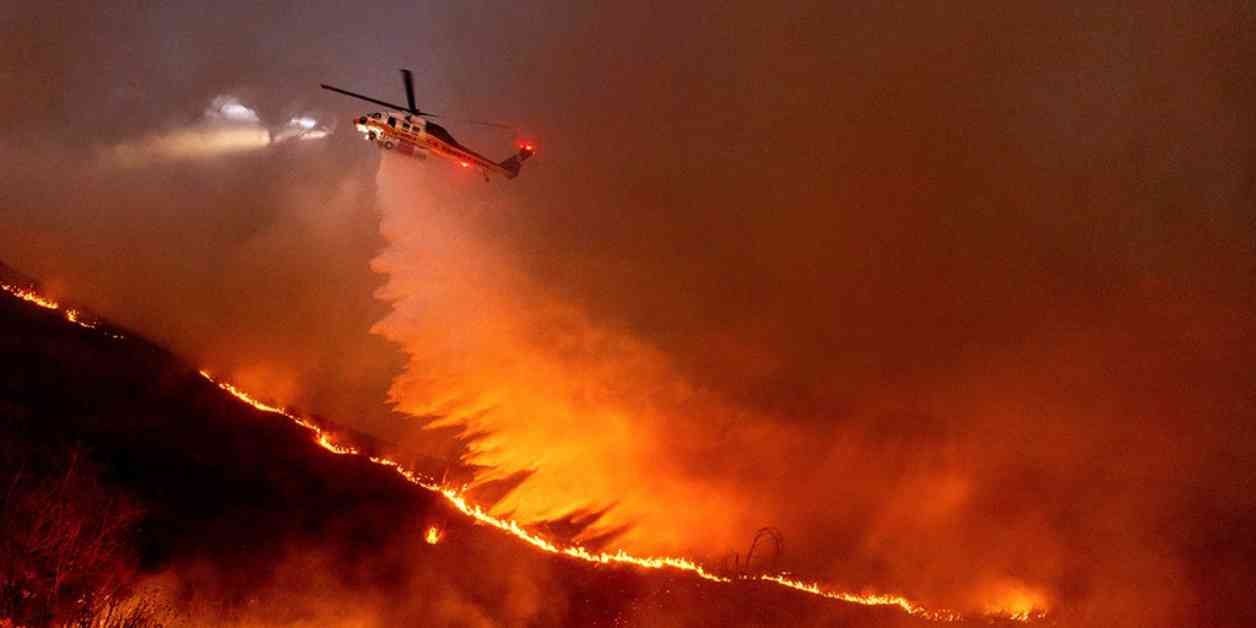**Understanding the Impact of Water Drops in California Wildfires: A Comprehensive Guide**
The wildfires in California have left a path of destruction in their wake, claiming lives and devouring thousands of acres of land. Firefighters have been working tirelessly to combat the infernos, using a fleet of specialized aircraft to drop water and fire retardant from the sky over Los Angeles. This coordinated effort is crucial in containing the fires and protecting lives and property.
**The State’s Fleet and Operations**
California’s fleet of firefighting aircraft includes tactical planes, air tankers, and helicopters, each with specific roles and capabilities. These aircraft work together seamlessly to tackle the raging fires that have been burning since Tuesday. According to Cal Fire, the state boasts the largest department-owned fleet of aerial firefighting equipment in the world, with over 60 planes and helicopters at its disposal. Operating from 14 airfields and 11 helicopter bases across the state, these aircraft can reach most fires within approximately 20 minutes.
**The Role of Different Aircraft**
Tactical planes play a vital role in directing tanker planes and firefighters on the ground. Cal Fire’s tactical planes, such as the North American Rockwell OV-10, provide crucial directions and coordinates to ensure effective firefighting strategies. Tanker planes, like the Grumman S-2T and C-130 Hercules, drop fire retardant to contain the spread of fires. Helicopters, including Bell UH-1H Super Hueys and Sikorsky S70i Black Hawks, carry water in buckets to douse flames and prevent the fire from spreading.
**The Pilots and Their Training**
The pilots who operate these firefighting aircraft are known as aerial firefighting pilots or waterbombers. Many of these pilots have military backgrounds and undergo specific training to handle the unique capabilities of their aircraft. Becoming a helicopter pilot involves accumulating between 1,500 and 4,000 hours of flight time as a pilot in command, equipping them with the necessary skills to combat wildfires in challenging conditions.
**Challenges and Dangers Faced**
Aerial firefighting is a hazardous and challenging task, especially when battling wildfires in hilly terrain with high wind conditions. Pilots must navigate through smoke, avoid obstacles, and coordinate closely with ground crews to contain the fires effectively. The recent Santa Ana winds posed safety risks for firefighting aircraft, delaying deployment until conditions improved. Additionally, drones have posed a threat to firefighting operations, highlighting the need for vigilance and caution in the skies.
**Conclusion**
As the wildfires continue to rage in California, the efforts of these aerial firefighting pilots are crucial in containing the fires and protecting communities. Their bravery and dedication in the face of adversity are commendable, as they work tirelessly to keep Californians safe from the devastating impact of wildfires.
By Michael Dorgan, Fox News Digital Writer
For tips and updates, you can reach out to Michael Dorgan at michael.dorgan@fox.com or follow him on Twitter @M_Dorgan.




